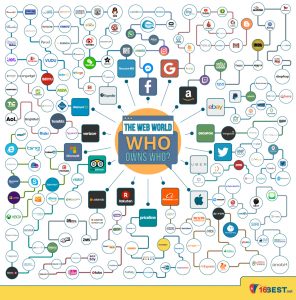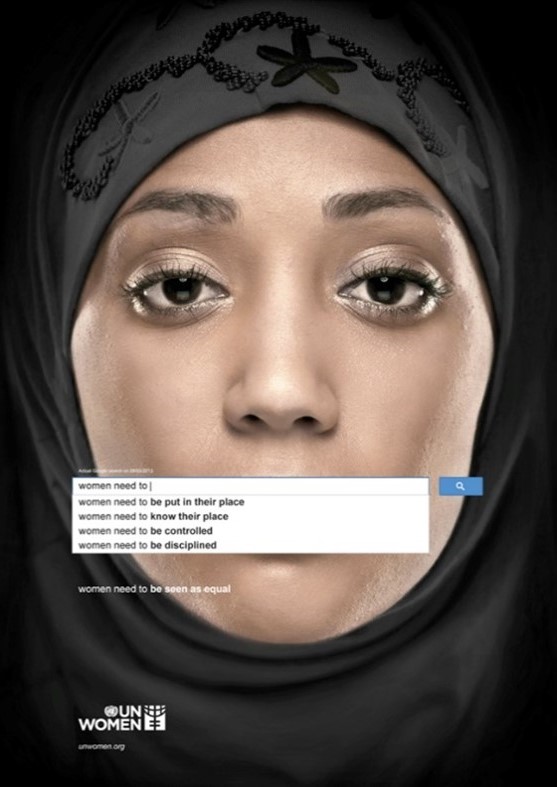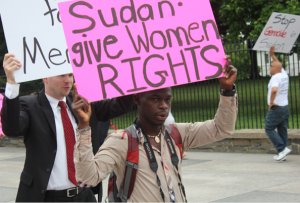
With the vigorous development of technology, the internet was flourishing rapidly since the mid-1990s. Internet is ubiquitous and almost every individual owns at least one digital device as a communication tool and connection to the community. Consequently, internet and information and communications technologies (ICTs) take a large part in individuals’ daily lives, especially the internet giants of social networks, social media, internet operation systems, searching and browser machines, like Google, Facebook, Twitter, Netflix, Apple and Microsoft, are the dominates among most of the countries in the world. Therefore, the internet directly and indirectly shapes populace’s values, social ideology and conception of the world easily.

Internet as an enhancement of gender inequality
Gender inequality involves the stereotypes and prejudice to cause discrimination between men and women. This ideology not only presents within the offline society but also spreads through the online media. The sharing information with biases include the restriction of females based on the stereotypes, dehumanisation, defamation and deliberately destroying women’s self-esteem. These inequalities relate to the geopolitical and socioeconomic of regions, and the hegemony of the government, so that digital media is considered as “tools of empire” and “weapons of politics” to achieve the authority’s ends – advocates men as superiors and women as inferiors (Winseck, 2017, p. 230). Sexism is presented through internet and online advertising, for example, in some Western countries, Black females are located in the lowest social position, by that coloured women are displayed as sexual commodities (Noble, 2018, p. 18, 31). Moreover, the autocomplete in the searching engines, displays the multifaceted stereotypes of gender.




Factors of causing gender inequality
Since the gender inequality in the offline environment has already had a strong influence on the public ideology, this social conception is continuing to conduct on online media and create a gender digital divide. Gender digital divide refers to ‘the gap between “haves” and “have-nots” to ICT access” (Suwana and Lily, 2017, p. 213).
In order to reveal the possible factors of causing inequality on the internet, we need to understand the potential determinants related to the general internet government – algorithmic system. Algorithmic system is used in a software to regulate the data with pre-programmed rule. It is decided by website code creators with their own perspectives and combines with other consideration elements, like the internet usage rate.
Internet usage – Adoption rates
The internet usage rate measures the frequency and intensity of using internet, which can be estimated in several dimensions – ‘being online, frequency of being online, and number of internet uses’ (Ono and Zavodny, 2003, p. 112).
Owing to the unequal social and economic status between males and females, for instance, in the patriarchal culture, males dominate society and families over females, women are restricted of physical mobility and interaction within the community, and a notion of ‘men are breadwinners and women are homemakers’ is built– males are employed and use internet as daily work routine; females as mother-roles to take care of their families and unable to access internet and any digital devices. This circumstance lead to the unbalance of gender users in the social network (Miller et al., 2006, p. 688). Besides, internet involves commercialisation that it makes money from advertising and click-through rate or viewers, therefore, the sharing content and services on the internet will mostly take the specific groups of main users into account who are already privileged, in this case, males are in the advantaged group.
Subsequently, it gives rise to the internet gender biases and the groups with lower utilization rates – females, will then lose political influences (Ono and Zavodny, 2003, p. 112) since females are lack of power to speak out their voices and lack of opportunity to establish movement or campaign for their rights to the public, to the world, in other words, their voices were intentionally muted, which exacerbated the gender disparity and inequality in both online and offline.
‘Without women’s full participation as creators, the internet will continue to be built with a bias towards male perspectives…’ (World Wide Web Foundation, 2020, p.4).
Internet as a reduction of gender inequality
However, internet is also able to reduce the unfairness and further change the social mobility. Is precisely because of the widespread of internet and ICTs, they are used to raise awareness to the disadvantaged groups and champion the possible harm to the world (Miller et al., 2016, p. 128).
Due to the oftenity of digital sharing materials from collectives, who are out of the patriarchal society, about the gender roles and fairness of sexuality, online materials and evidence, such as videos and victims’ voices trigger and draw more and more individuals attention to the gender inequality. Accordingly, it is gradually changing the folk’s mind and social conception about the stereotype and bias of gender, so that internet also as a form of reducing the discrimination and harms of gender-related. As an example, the gender inequality in Sudan, the Sudan’s protest movement had drawn the public attention around the world. This movement was mainly promoted by different organisations, institutions and influences through WhatsApp, Facebook and Instagram with revealing the patriarchy and gender inequality in Sudan to facilitate peacefulness and democracy (Robertson & Ayazi, 2019, para. 2).

In addition, on the account of the pervasiveness of ICTs and the internet, every household will have digital technologies, this allows to access internet and get education for women who are restricted by the patriarchal society. Females are able to be educated online and get opportunities to receive overseas professional education, or visit YouTube or any other websites to acquire skills and knowledge. These online learning approaches reduce the necessity of study abroad or leaving home, and improve women’s literary and academic levels, as Miller and Paige et al.’s report shows that there were 62.6% of males and 46.8% of females attained Ph.D. in 1994 and 52.7% and 53.7% in 2000 respectively (Miller et al., 2006, p. 685). Accordingly, it in fact reduced the gap in educational achievements among gender.
Moreover, internet can provide women’s employment opportunities, and further to the avoidance of mobility restrictions and even possible to elimination the patriarchal culture and gender inequality. Since women’s education level improves, they can have contributions to the society, women’s productivity will then increase as a result, such as females participate in research and be teachers in education. Thus, women’s social status gradually rises with empowerment, including obtain more power in bargaining position and engaging policy, thereby improves and possible to remove the unequal relationship between men and women (Miller et al., 2006, p. 688; Jahja, 2013, pp. 134-135).
Summary
Overall, the geopolitical, socioeconomic, social conception and internet usage rate are taken into account of operating internet and the algorithmic system. It is important to regulate and govern in a neutral way with unbiased content because internal and social media as mode of social change which they are able to establish a large-scale of populaces’ minds. Last but not the least, internet mere an auxiliary tool for communication and connection to the community, and the sharing contents and materials are mainly presented in response to the social situation at that period of time, hence internet can play a role in both enhancing and reducing gender inequality. Additionally, in order to overcome the social inequality, the most effective way is to regulate individuals’ ideology and social conception, and amalgamate with the technologies and internet to champion equality, as well as improve the quality of life in society and the world.
References
Jahja, 2013, ‘Indonesia. Transformation of social roles through ICTs for rural women’, Global information society watch 2013, women’s right, gender and ICT, pp. 134-135. http://issuu.com/hivos/docs/giswatch_2013_chapters/134
Miller, B. P., Sooryamoorthy, R., Anderson, M., Palackal, A., & Shrum, W. (2006). Gender and Science in Developing Areas: Has the Internet Reduced Inequality? Social Science Quarterly, 87(3), 679–689. http://www.jstor.org.ezproxy.library.sydney.edu.au/stable/42956148
Miller, D., Costa, E., Haynes, N., McDonald, T., Nicolescu, R., Sinanan, J., Spyer, J., Venkatraman, S., & Wang, X. (2016). Inequality. In How the World Changed Social Media (1st ed., Vol. 1, pp. 128–141). UCL Press. https://doi.org/10.2307/j.ctt1g69z35.16
Ono, H., & Zavodny, M. (2003). Gender and the Internet. Social Science Quarterly, 84(1), 111–121. http://www.jstor.org.ezproxy.library.sydney.edu.au/stable/42955858
Suwana, F., & Lily. (2017). Empowering Indonesian women through building digital media literacy. Kasetsart Journal of Social Sciences, 38(3), 212–217. https://doi.org/https://doi.org/10.1016/j.kjss.2016.10.004
Winseck, D. (2017). The Geopolitical Economy of the Global Internet Infrastructure. Journal of Information Policy, 7, 228–267. https://doi.org/10.5325/jinfopoli.7.2017.0228
World Wide Web Foundation. (2020). Women’s Rights Online Closing the Digital Gender Gap for A More Equal World. October, 1–6. http://webfoundation.org/docs/2020/10/Executive-Summary-English.pdf


